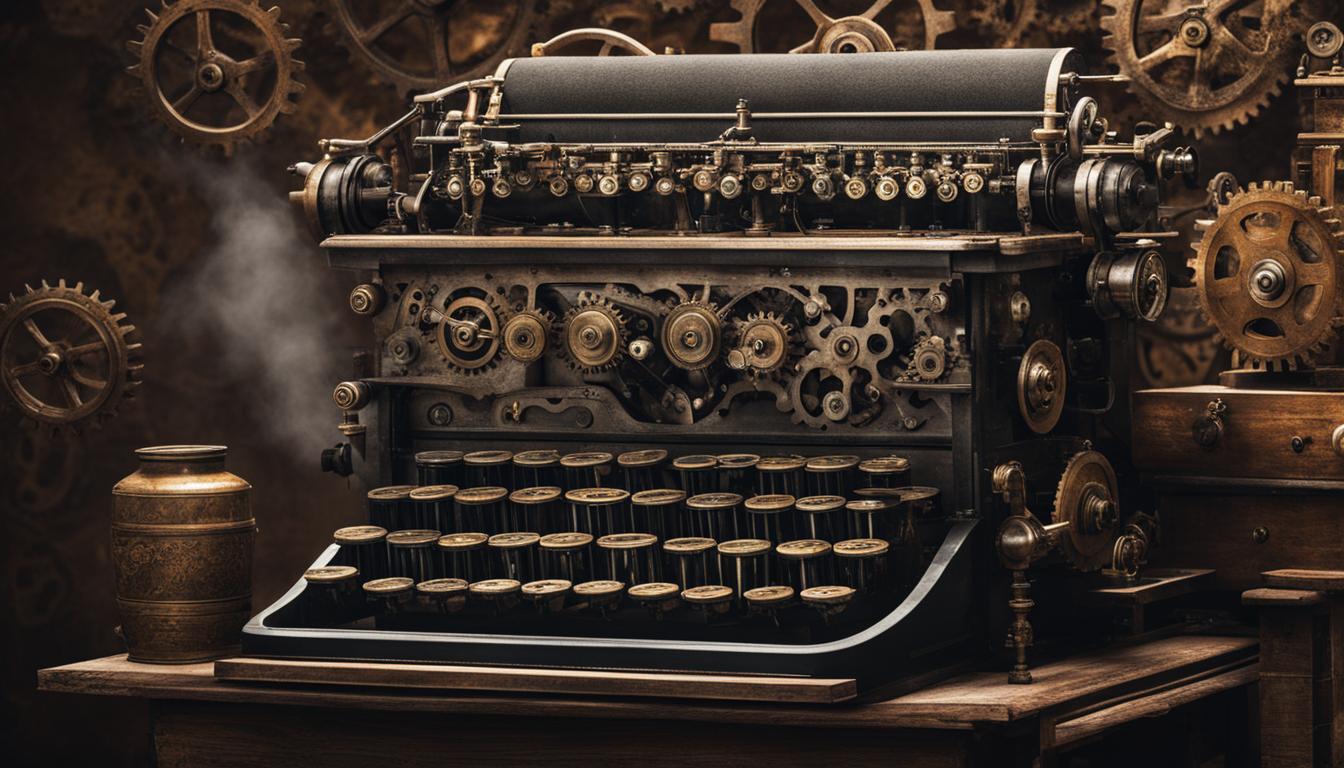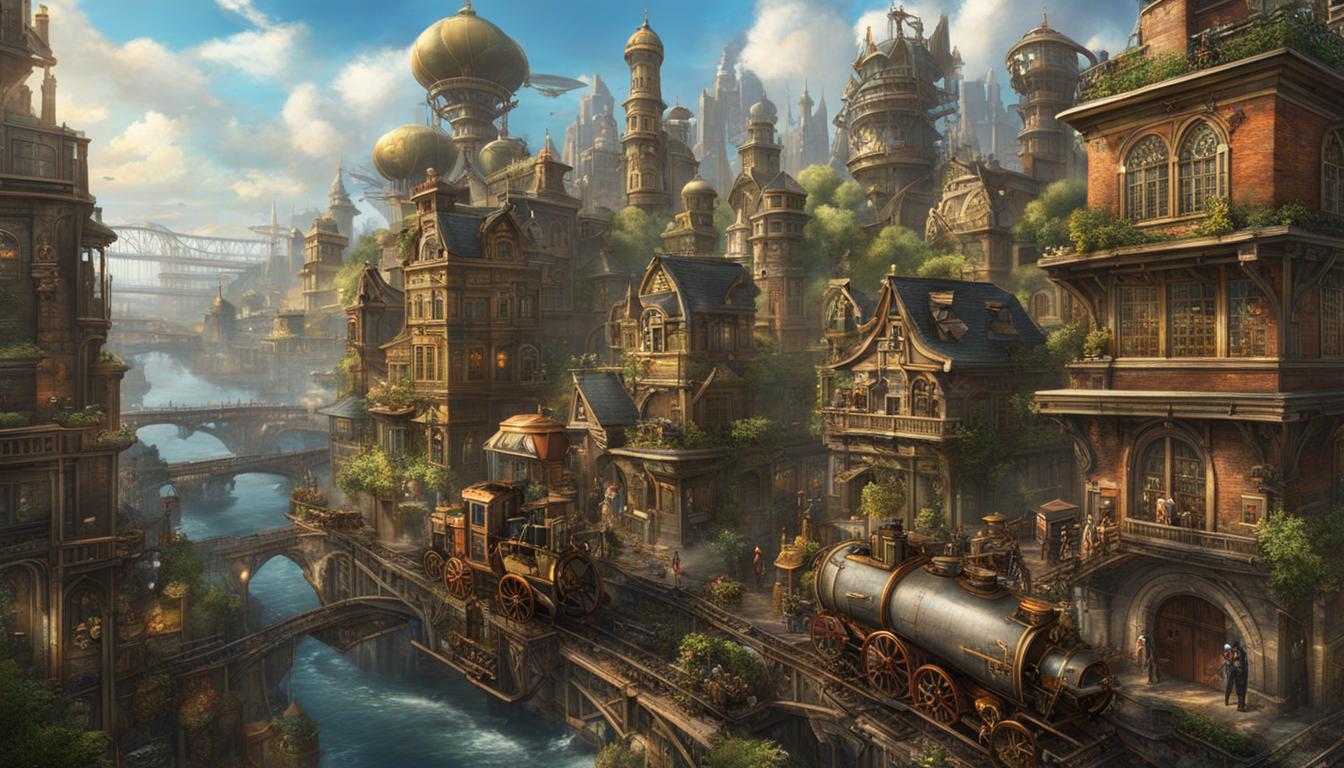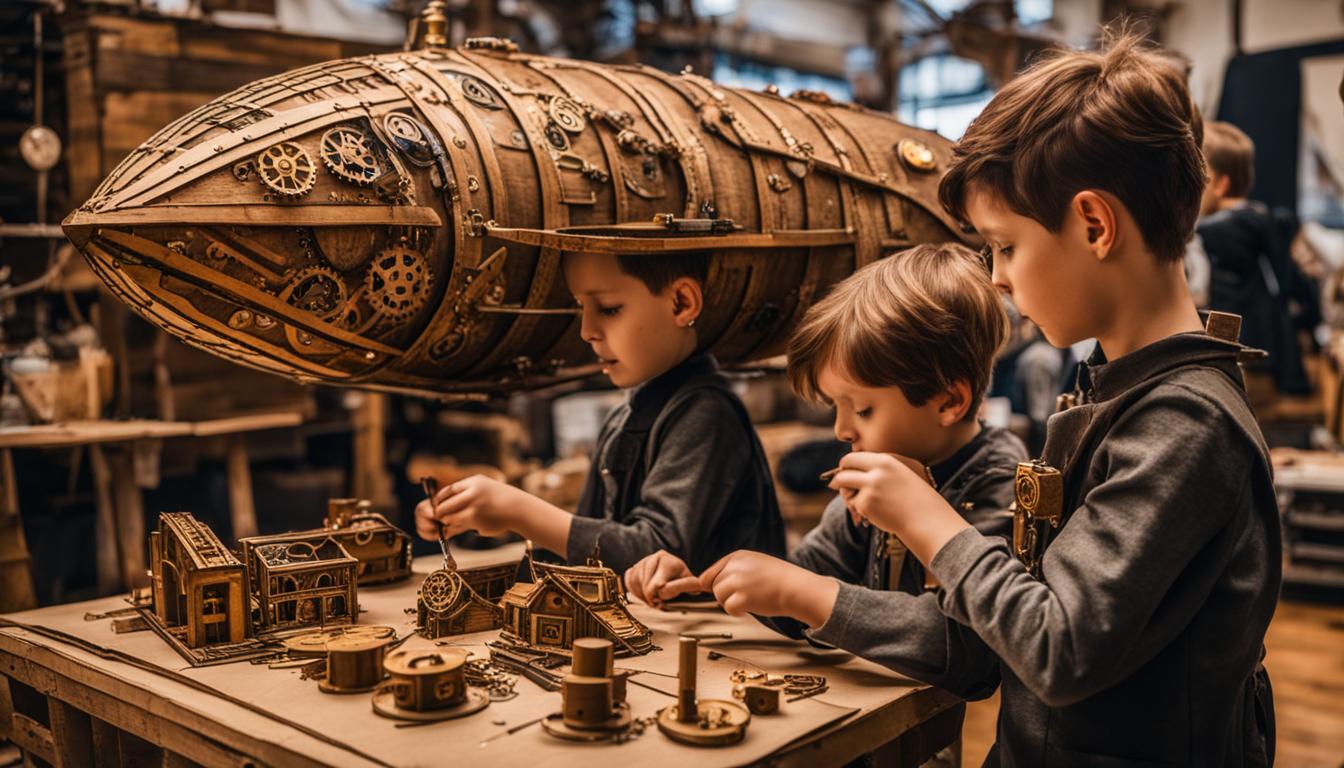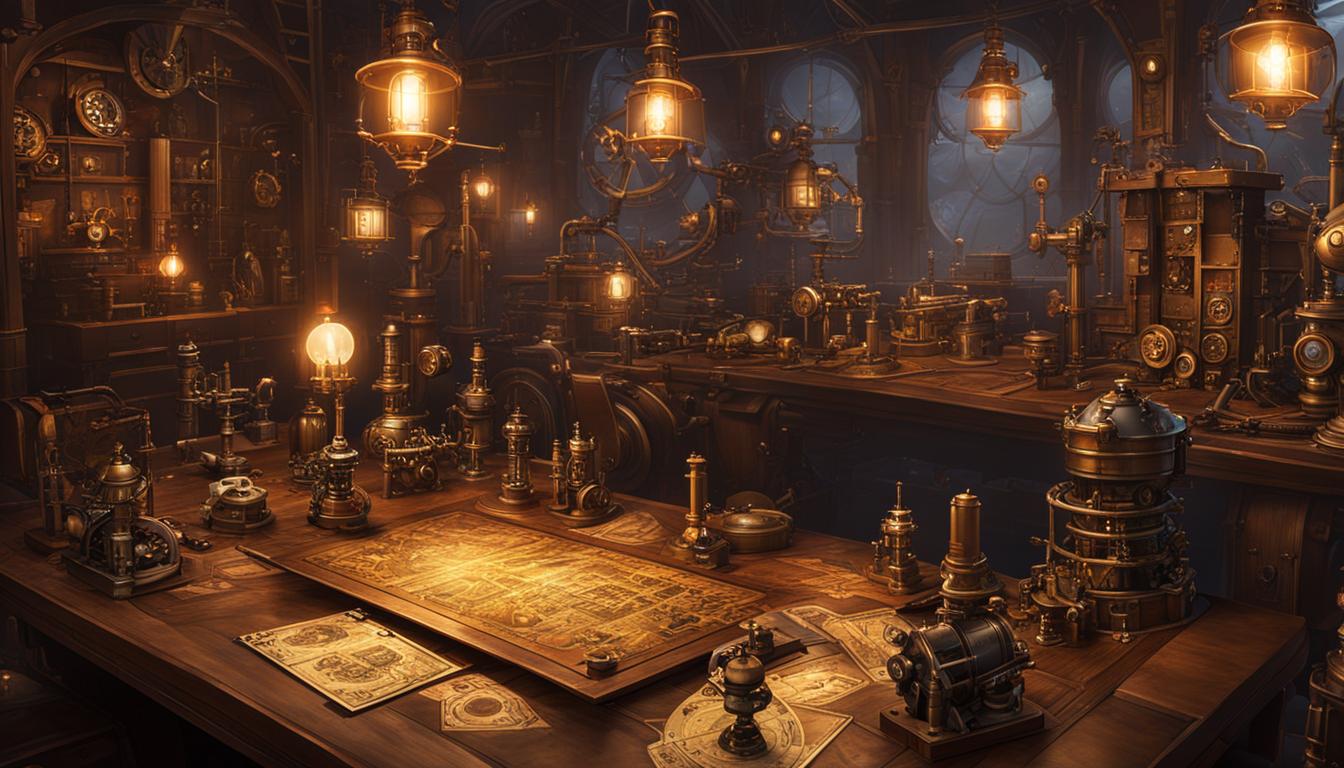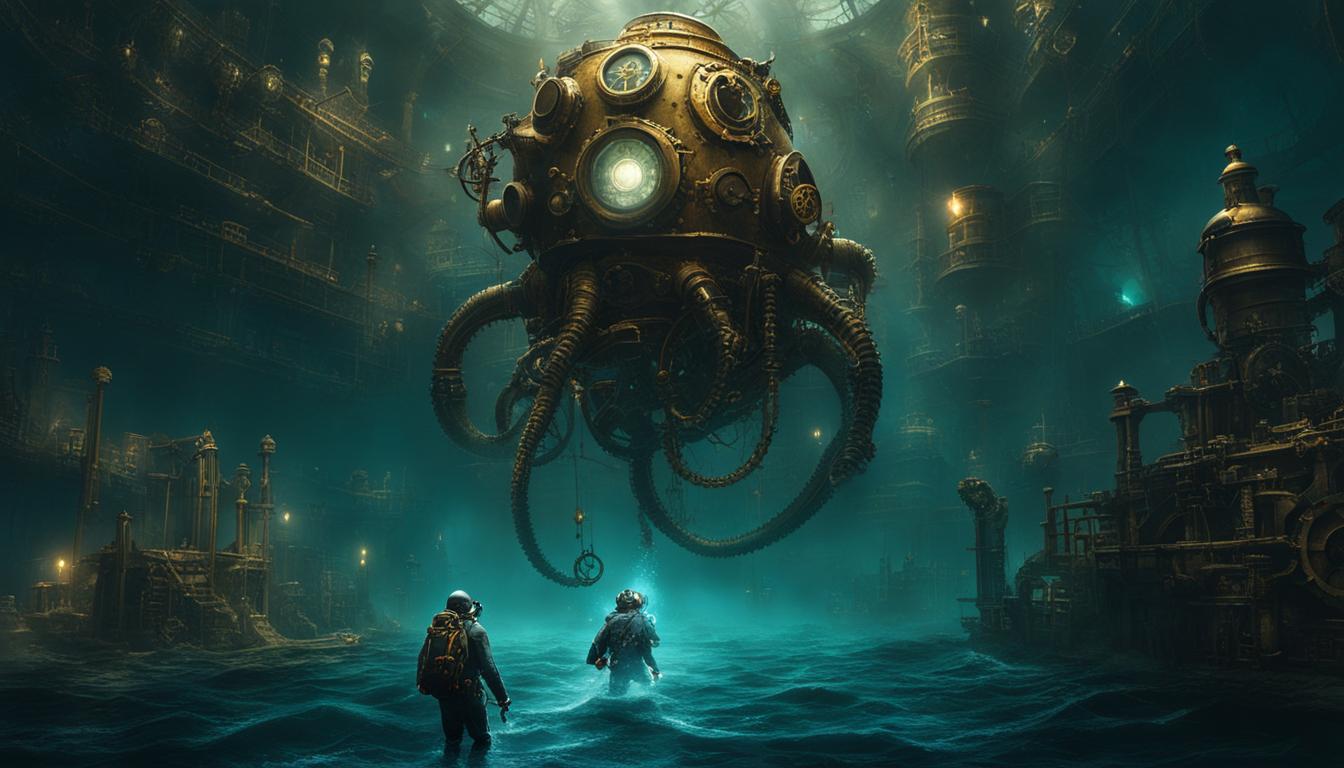Welcome to the world of steampunk writing! If you have a love for all things Victorian, with a twist of science and technology, then this genre is for you. Steampunk offers a unique blend of historical fiction, fantasy, and adventure that sparks the imagination and transports readers to a world like no other.
But how do you create compelling steampunk stories that captivate readers? What techniques can you use to develop believable characters and build immersive worlds? In this article, we will explore strategies and tips for aspiring steampunk writers, helping you unlock the secrets to crafting captivating narratives in this exciting genre.
Key Takeaways:
- Start with a compelling premise or concept that explores new ideas or possibilities.
- Create believable and well-developed characters that readers can relate to and care about.
- Build a rich and detailed world that is consistent and internally logical.
- Use scientific concepts and technology in a way that is both accurate and interesting.
- Incorporate themes and commentary on the human condition that add depth and meaning to the story.
Developing Engaging Steampunk Characters
When crafting steampunk narratives, it’s crucial to develop compelling and engaging characters that resonate with readers. Creating well-rounded and relatable characters is key to immersing readers in the steampunk genre and making your story memorable.
One way to make your characters come to life is by giving them unique traits and flaws. These characteristics make them more interesting and realistic, allowing readers to connect with them on a deeper level. Additionally, exploring the role of women in Victorian society and challenging traditional gender norms can add depth and complexity to your characters, making them more compelling.
“In the world of steampunk, cultural backgrounds can have a significant impact on characters’ experiences. By considering different cultural backgrounds, authors can create diverse and multi-dimensional characters that further enrich the steampunk world.”
Another important aspect of crafting steampunk characters is to develop complex relationships between them. Creating conflicts and tension within these relationships adds depth to the story and keeps readers engaged. A character’s growth and development throughout the narrative is also crucial for a compelling steampunk story. Showcasing their personal transformations and journeys within the steampunk world allows readers to connect with their struggles and triumphs.
Table: Character Development Tips
| Tips | Examples |
|---|---|
| Give characters unique traits and flaws | A brilliant inventor with a fear of heights |
| Explore the impact of cultural backgrounds | An Indian engineer challenging British colonial stereotypes |
| Create complex relationships between characters | An estranged father and daughter reconnecting amidst a steampunk revolution |
| Show character growth and development | A timid apprentice blossoming into a fearless heroine |
By following these techniques, you can enhance your steampunk writing skills and create characters that will captivate readers in the fascinating world of steam-powered wonders and Victorian aesthetics.
Creating Immersive Steampunk Worlds
Step into a world where steam-powered technology intermingles with fantastical elements, creating a visual spectacle that is both awe-inspiring and mysterious. Crafting a truly immersive steampunk world requires careful attention to detail and a vivid imagination. Here, we offer guidance and writing strategies for aspiring steampunk authors who are looking to create captivating and authentic stories.
Begin by establishing the rules and limitations of your steampunk universe, where steam-powered contraptions reign supreme. Consider the impact of industrialization and technological advancements on society, and weave in historical elements to ground your world in a familiar context. Dive into the mesmerizing architecture, fashion, and aesthetics of the steampunk era, transporting readers to a different time and place.
But a world is more than its visual appeal. Delve into the social and political dynamics of your steampunk universe, exploring issues of class, power, and inequality. Showcase the far-reaching effects of steam-powered technology on everyday life, transforming transportation, communication, and industry. Consider the ethical implications and consequences of this technology on society, adding depth and complexity to your narrative.
Don’t be afraid to blend science and magic, infusing your steampunk world with a sense of wonder and enchantment. Utilize descriptive language and sensory details to create a vivid reading experience for your audience. Use worldbuilding techniques such as maps, timelines, and cultural traditions to develop a rich and multifaceted steampunk universe. And through it all, use your world to explore themes and social issues that are inherent to the steampunk genre.
FAQ
What are some strategies for aspiring steampunk writers?
Some strategies for aspiring steampunk writers include creating believable characters, building a rich and detailed world, using accurate and interesting scientific concepts, incorporating themes and commentary, studying the work of successful steampunk authors, and revising and editing your work multiple times.
How can I develop engaging steampunk characters?
To develop engaging steampunk characters, give them unique traits and flaws, explore the role of women in Victorian society, consider the impact of different cultural backgrounds, create complex relationships between characters, show their growth and development, and use dialogue effectively to reveal their personalities and motivations.
What are some tips for creating immersive steampunk worlds?
Tips for creating immersive steampunk worlds include establishing the rules and limitations of your world, incorporating historical elements and cultural references, describing the architecture and fashion, exploring social and political dynamics, showing the impact of technology on everyday life, considering the ethical implications of the technology used, and using worldbuilding techniques to develop a rich and complex world.

